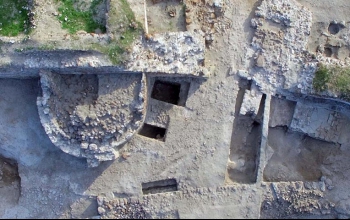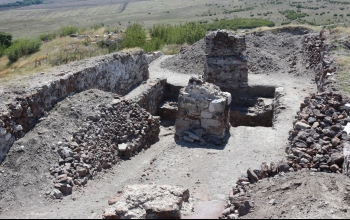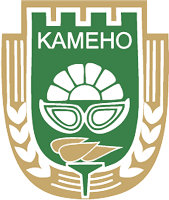Rusokastro Fortress

The monumental Bulgarian fortress Rusokastro is built 20 km west of Burgas, on top of a high rocky hill. It is located on an area consisting of 52 acres and this makes it the largest fortress in southern Bulgaria.
The first fortification of the rock hill dates back to the 6th century AD. Later, a fortress wall was built, encircling the whole hill, and several towers. At the end of the 9th century there was already a Bulgarian garrison here, as evidenced by numerous finds from that time. In the 12th century, the Arab geographer al-Idrisi spoke of the city of Rusokastro.
At the beginning of the 13th century, the entire fortress wall of Rusokastro was destroyed and rebuilt again, with a completely different layout. This is the work of the Bulgarian kings of the Assenevtsi dynasty. The medieval city was accessible from the west via a cobbled road. It passed through a two-winged gate, guarded by a protruding fortress wall built between two towers. Subsequently, the passer-by entered through a second double-leaf gate and then through a third, which is a falling cataract-type gate.
The only such entrance from the Middle Ages in Europe, and in Asia Minor, is known only from the fortress Dimotika, today's Hellenic Republic.
The top of the hill is fortified in the form of a classic medieval castle. It was surrounded by a separate fortress wall, between 2.5 and 4.15 m wide. The castle entrance was up through a masonry stone staircase 2 m wide and 12 m long. A monumental building with three masonry stone pillars bearing the second floor was built in the castle itself. , and a large reservoir covered with a vault. A hexagonal dungeon tower, 15 m long and 12 m wide, was built in the highest part of the hill. Its height was about 20 m.
The fortress wall of the castle was further reinforced by 3 round and one rectangular towers. The preserved architectural remains today rise to a height of 5 m.
A fortified passage was built on the northern slope of the rocky hill, ending with a tower-well. It is 80 m long and 6 m wide. There was a second defensive tower in the passage.
Rusokastro Fortress is very often mentioned in historical sources. It was a military camp of the armies of the Bulgarian kings, but also of the Byzantine emperors. The fortress is very popular because of a fierce battle that broke out under its walls in 1331/2. Then the Byzantine troops, led personally by Emperor Andronicus III Palaeologus, were defeated by the Bulgarians, also led personally by the Bulgarian Tsar Ivan Alexander. As a result of the battle of the "two emperors" and the achieved Bulgarian victory, the entire southern Black Sea coast was returned to the Bulgarian state, and the Byzantine princess Maria was given as the wife of the Bulgarian heir to the throne Prince Mikhail Assen.

























